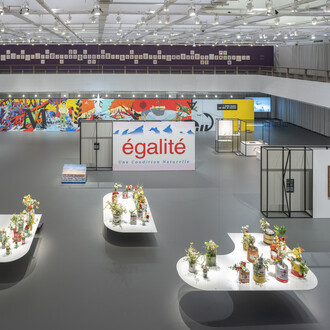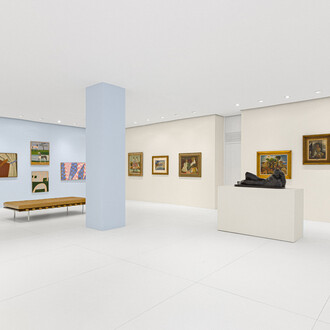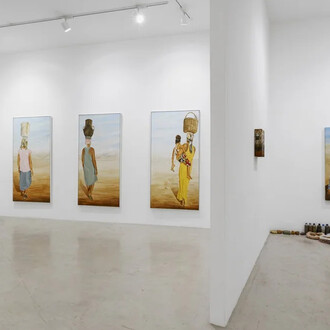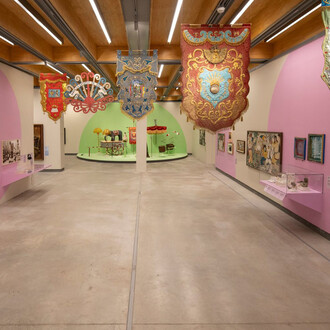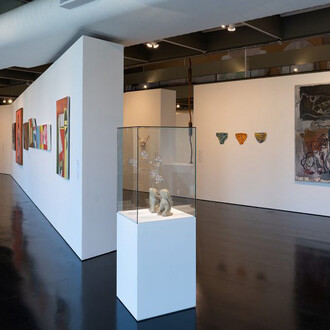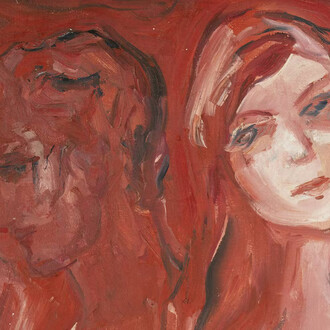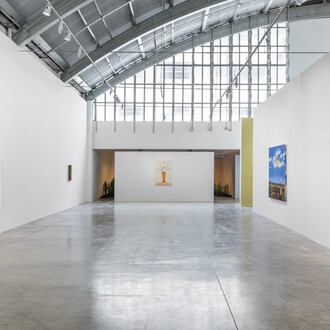In its third exhibition of the year, Bergamin & Gomide presents a solo exhibition by British artist Hamish Fulton, from August 13 to October 5, 2019, featuring artworks in different supports and produced in various career phases of the artist, whose poetics dialogues with the experience of walking. Hamish Fulton (London, 1946) is a self-denominated “walking artist.” He says that he is an artist who walks and develops a research that evinces the aim to transform ideas into real experiences. His body of work is not limited to the act of walking, the artist is recognized for his singular trajectory that has blended nature, photography and texts.
In Fulton’s second exhibition in Brazil, the gallery will present 25 works produced in the period spanning from the 1960s until today, including sculptures, drawings, photographs and a site-specific work. The work Untitled (USA, 1969) consists of black-and-white photographic records of one of his many crossings of the Iberian Peninsula. In this work, the viewer can assimilate the subtle and poetic experience of Fulton’s path, as well as the obstacles and discoveries along the way, represented by an animal carcass, a tree trunk’s shadow on the ground, a circular pattern expanding from a reflecting pool, and a cattle herd crossing the road.
The show will also feature works with references from Nepal to Norway; drawings that allude to the outlines of mountains, combined with texts that refer to the paths taken, as at Mount Fuji, in the work Fuji. Japan, 1988, and in the Rocky Mountains of Wyoming, in the work Seven Small Mountains, 2017. There will also be artworks in which the artist uses woodas a support and creates a particular symmetric conception of these experiences, as in his crossing of the Sierra Nevada in Spain in the work A Walk to the Top of Mulhacen Sierra Nevada Spain Easter, 1984, and the volcano Licancabur in the frontier between Chile and Bolivia, in the work Licancacur Bolivia, 2012.
Over the course of his nearly 50-year career, Hamish Fulton has held solo shows and retrospectives in important institutions such as Centre George Pompidou in Paris, MoMA in New York, and Tate Britain in London, as well as group shows, including Documenta 5 and Documenta 6 in Kassel. His works are contemplated in important collections worldwide such as those of the National Museum in Japan and the Guggenheim Museum in New York.
There are more than 40 publications about his work and experiences on trips worldwide, to countries like Nepal, Tibet, Japan, Bolivia, Chile, France, Spain, Scotland and others. His artistic production involves various resources including drawings, texts, photographs, wall paintings, paintings, videos, group walks in urban spaces and editorial projects.
Although his artistic production is often associated with land art – an aspect the artist mentions ironically in the invitation to one of his exhibitions with the phrase “THIS IS NOT LAND ART” – it goes beyond the conceptualism normally present in interventions in nature, being manifested through productions in a wide range of materials and a rigorous process of documenting what he experiences. Routes, maps, paths, diaries, dates, photos, drawings, collages and notes, everything coexists and is under Fulton’s control. His routes must be well-defined, the maps easy to read, the tent and sleeping bag of high quality and easy to use, his shoes adequate for the entire journey, the food must be dry and without packaging that would take up space, and above all, the artist must have a good book and notebook at his disposal.
Fulton's creative process, that is, walking, bestows the earth’s importance in his body of work, bringing forth a kind of knowledge that goes beyond the comprehensible. In his work, without any act of interference in nature, it is possible to feel the human presence, and to see the reflection of the identification between artist and man, or even a response to the instinctive and primitive need that human beings have to make contact with each other.
Hamish Fulton might be showing us, perhaps unconsciously, that before being an artist, he is an man. As he himself stated, a walk is not a form of recreation nor a study of nature; rather, walking is a way of improving oneself, physically and mentally, in order to experience a temporary state of euphoria, an intimate connection between one’s mind and the environment. Walking is old and contemporary; walking is the relation with the whole.







![Bruno Munari (1907-1998)
Forchetta parlante, 1958-1991, Ed. 18/20
Garfo torcido sobre madeira
[Bent fork on wood]
15 x 7 x 3 cm [5 7/8 x 2 3/4 x 1 1/8 in.]](http://media.meer.com/attachments/582ae4ad2069da3df8b04376669e19755ef38c25/store/fill/330/330/fddfcc2bc266d3812450a83789a0c87812d6adba2c5fe72080b1c3b22654/Bruno-Munari-1907-1998-Forchetta-parlante-1958-1991-Ed-18-slash-20-Garfo-torcido-sobre-madeira.jpg)
![Bruce Conner (1933-2008)
BREAKAWAY, 1966
Filme 16mm em preto e branco
[Black and white 16mm film]
5 min
BC-0019
Courtesy: The Conner Family Trust, Kohn Gallery and Bergamin & Gomide](http://media.meer.com/attachments/7d07aa708db7f25e05333b5b262166f49883bfa7/store/fill/330/330/839c49e290870e0a9fe994df5e0c140d163ec7ca78a6019e5e8b269855f1/Bruce-Conner-1933-2008-BREAKAWAY-1966-Filme-16mm-em-preto-e-branco-Black-and-white-16mm-film-5.jpg)
